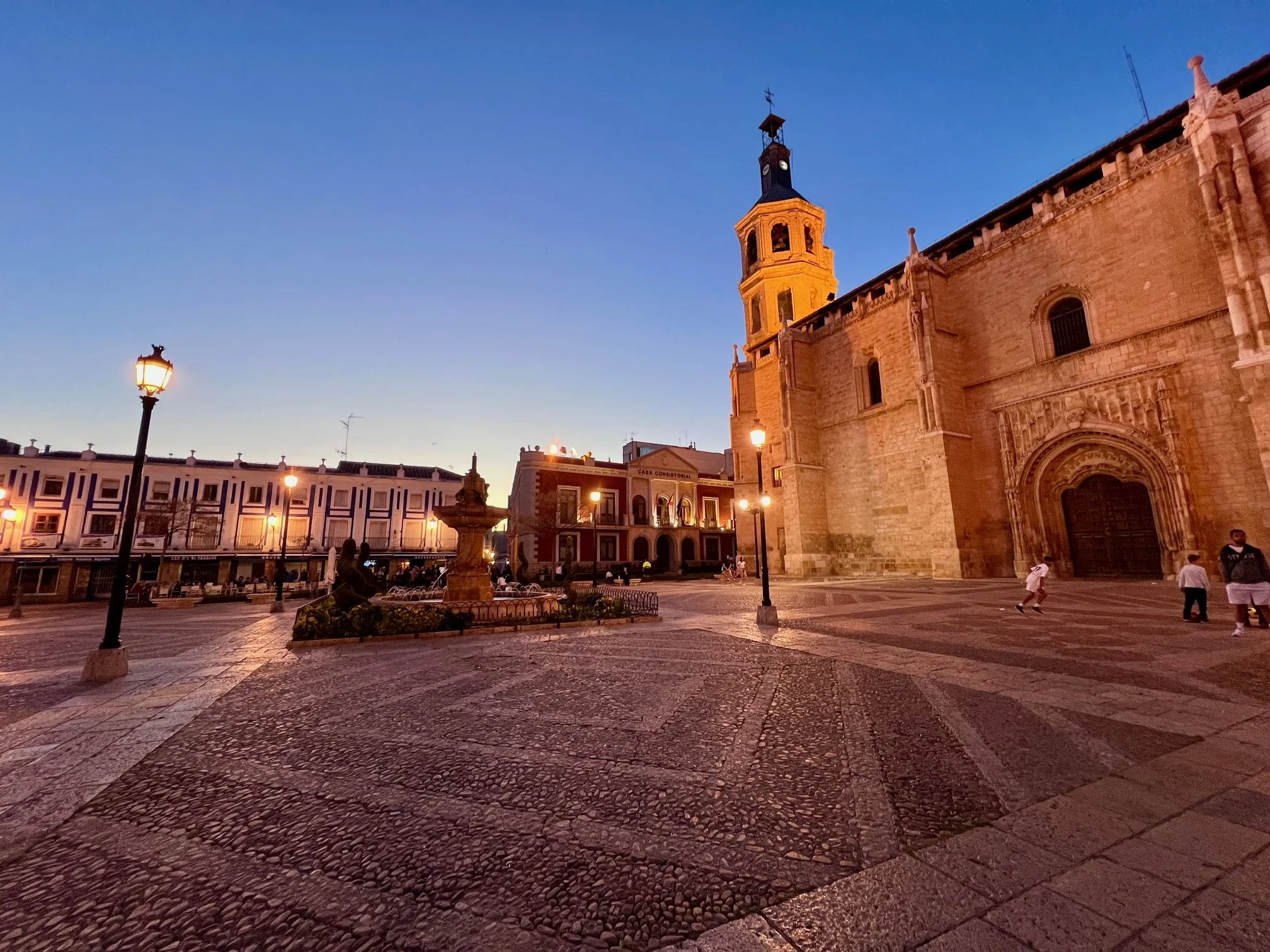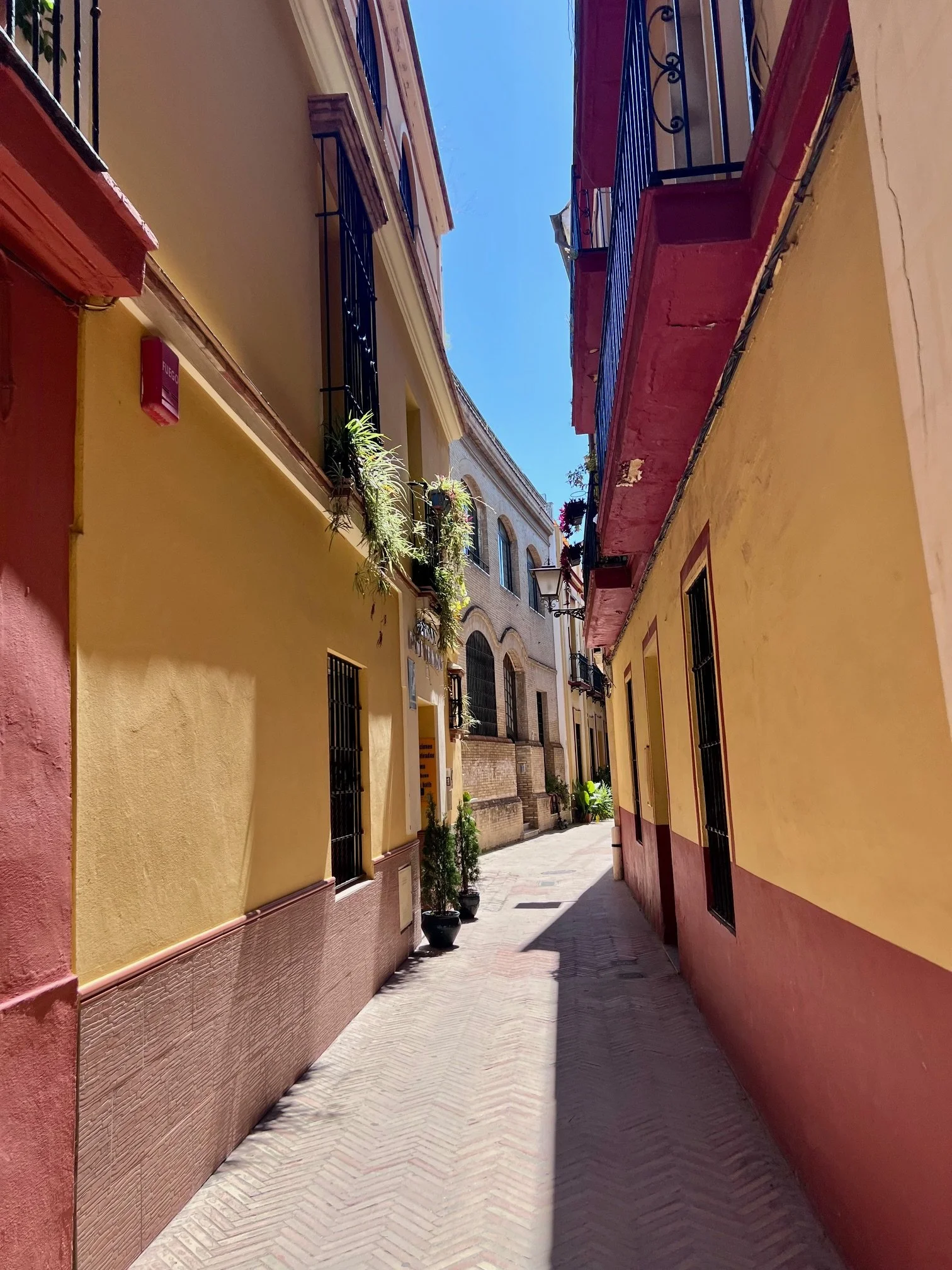Ultimate Road Trip from Barcelona to Seville
Andalusia, Spain
Given its central location between Europe, Africa, and the Mediterranean Sea, Spain has been shaped by many and varied cultures. The Greeks, Romans, Moors, and Muslims, among others, have had significant influence here, and many of those influences are still very present today.
Exploring all of Spain’s cultural treasures could take a lifetime. Many travelers opt for the Spanish rail system to cover a lot of ground quickly; however, there is nothing quite like a road trip for a real adventure.
Driving to destinations unknown is truly liberating. Spain’s highway system is well-designed and easy to navigate, making much of this beautiful country accessible.
For this road trip guide, I explore the south of Spain, starting and ending in the beautiful city of Barcelona. To follow in my footsteps, allow at least 7-10 days to fully immerse yourself in the culture of Southern Spain.
Destinations on the road trip from Barcelona to Seville
Barcelona
Park Güell, Barcelona
Barcelona is one of the most enchanting cities in the world and is often the sole destination for many who travel to Spain. It boasts breathtaking architecture designed by the famous Antoni Gaudí (La Sagrada Familia, Park Güell, Casa Batlló), stately art and history museums, and unbeatable nightlife.
As the capital of Catalonia, Barcelona makes it easy to delight in excellent cuisine. For recommendations of must-try foods in Catalonia, read here.
Spend at least two or three days in Barcelona to explore this fantastic city.
Casa Amatller & Casa Batlló, Barcelona
Next stop: València
Castillo de Peñíscola
The next destination on our epic road trip is the province of València. While the capital city of València gets most of the hype, the province of València also has many beautiful destinations to explore.
To visit València city, spend one or two days exploring attractions such as the City of Arts and Sciences, the Cathedral, Miguelete and Holy Grail, and La Lonja.
For a less busy destination in this province, visit the coastal town of Peñíscola, located along Costa del Azahar, or the Orange Blossom Coast. Take a scenic walk to visit Castillo de Peñíscola for incredible views of the sea and town. One day in Peñíscola is plenty of time to explore.
El parc d'artilleria, Peñíscola
In addition to the Valèncian orange (orange juice is amazing here!), this region is also famous for one of Spain’s most beloved dishes, paella.
Paella is made with rice, saffron, vegetables, meats, or seafood, and then served in a shallow pan. A visit to this province must include a stop at a local arrossería (or arroceria), to try authentic paella.
Arrocería Las Bairetas, València
As you continue along your journey, drive west from València on Highway A-3, then head to Requena and Utiel. These are quiet towns known for wine production, especially Bobal, a grape rarely grown elsewhere in the world. This grape produces a red wine that is bold, balanced, and unique. Visit a vineyard in this region to try a glass of Bobal wine.
I visited and booked a stay at Bodega Vera De Estenas in Utiel. The accommodation was cozy and charmingly Spanish. Waking up with a view of the vineyards was lovely and so relaxing. In Requena, I visited Finca Calderón for a wine tasting. Finca Calderón is also an enoresort (wine resort and hotel) with great views.
Tip: Many wineries in this region only offer tastings until 2 p.m., so plan ahead to visit.
La Mancha
Traveling west on Highway A-43, we now arrive in La Mancha, the home of Cervantes’ heroic character, Don Quixote. La Mancha is pleasant to drive through, with rolling hills and numerous windmills to greet you.
La Mancha is also famous for one of Spain’s most famous cheeses: Manchego.
Visit the Manchego Museum in Manzanares to learn about Manchego and buy some to take with you.
Valdepeñas
Valdepeñas is a quaint town in Castilla-La Mancha that is a great stop to try the wines of this region. Many vineyards here use the traditional method of fermenting grapes in stone vats rather than in oak barrels.
Stone vats for wine fermentation
Up next: Córdoba
Continue south on Highway A-4, and arrive at one of my favorite regions of Spain: Andalusia (Andalucía in Spanish). Andalusian architecture is distinctive, largely thanks to the Moors who ruled here for centuries.
In Andalusia, you’ll find beautiful white-washed buildings with vibrant, colorful accents. Courtyards with lush gardens are also famous here, and the charming city of Córdoba has many to explore, with the grandest in the Alcázar de los Reyes Cristianos.
Alcázar de los Reyes Cristianos, Córdoba
Alcázar de los Reyes Cristianos, Córdoba
One of the greatest displays of Moorish architecture in Andalusia is the Mezquita Catedral, an absolute must-see while exploring Córdoba.
Welcome to Seville!
La Catedral de Sevilla
Depart Córdoba and continue on the A-4 for approximately an hour and a half to enter the capital of Andalusia, Seville (Sevilla in Spanish). Moorish architecture continues on a grander scale as seen in the regal Real Alcázar de Sevilla and La Catedral de Sevilla.
Other must-see attractions in Seville include the Plaza de España and Setas de Sevilla. Spend two days here to explore this beautiful city. While there is plenty to see in Seville for a full schedule, leave time to wander and enjoy the beauty around every corner.
Plaza Nueva, Seville
Seville
A cultural gem of Andalusia is the art form of Flamenco which combines soulful music with interpretive dance. The emotion of this performance is unlike any other, so make sure you reserve a ticket to a flamenco show during your visit.
Tablao El Cardenal, Córdoba
The climate of Andalusia is quite warm, making it the perfect terrain for olive production. You’ll see countless olive groves along your journey and will have plenty of opportunities to enjoy the best olives and olive oil you’ve ever tasted.
Taberna El Arcediano, Baeza
The Journey Back
Plaza del Pópulo, Baeza
This journey to Seville is comprehensive; however, allow an additional two days for the return to enjoy more along the way. Head east away from Seville and visit the ancient towns of Baeza and Úbeda in the province of Jaén.
These towns are UNESCO World Heritage Sites and feature beautiful examples of Italian Renaissance architecture. They’re also famous for olive oil production.
Catedral de Baeza
As you travel north and re-enter Catalonia, allow an afternoon to explore the historic city of Tarragona. Tarragona is also the name of the province.
Les Ferreres Aqueduct, Tarragona
Tarragona is located south of Barcelona along the Costa Daurada or Golden Coast. This city has significant Roman influence with well-preserved ruins throughout.
Notable places to explore in the city of Tarragona include Les Ferreres Aqueduct and Amfiteatre de Tarragona (the Roman Amphitheatre of Tarraco).
For more suggestions on visiting Tarragona, read here.
Catedral de Tarragona
Now go enjoy your Spanish adventure. ¡Buen viaje!
Published: May 17, 2025 - Updated November 21, 2025

















